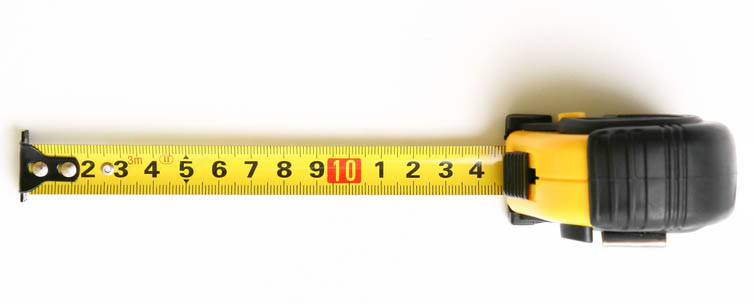Buying a new car is a big expense, and it takes time and effort to find the perfect one. Once driven off the lot, it’s your responsibility to keep it running in great shape for years (even decades) to come.
In other words, your car requires regular maintenance. Most people have their cars checked out every so many miles or months to make sure everything under the hood is running smoothly. What you don’t want to do is ignore the preventive maintenance and just wait until there’s an engine failure or other catastrophic event — by then, the damage may be past the point of no return.
Similarly, investors may be tempted to buy assets (like stocks and bonds), build a portfolio, and ignore it until something major happens in the market — think a sudden upswing or downturn. While this strategy may work for some, it also can make it harder to spot problems in your portfolio until the markets bring your attention to them. Again, by then it could be too late to fix.
Rather than base your portfolio check-ins on market performance, you may be better off scheduling periodic reviews, which enable you to evaluate your investment holdings and tune up your portfolio if necessary. You’ll want to make sure your portfolio is still working in alignment with your long-term goals, life circumstances or changes, and market opportunities.
If you’re working with an advisor, these tune-ups may be accomplished at quarterly or annual check-ins. But if you’re managing your portfolio on your own, you’ll need to set aside time on a regular basis (ideally, at least once a year) to sit down with your investments and conduct a thorough evaluation.
How to conduct a portfolio tune-up
It's important to understand why a portfolio tune-up is a good idea, but you also need to know what to look for, exactly. Here are five steps to help you get started.
Step 1: Take stock of your current situation
Before making any changes, you need to have a full understanding of what you own, how you’re invested, and how it’s taxed.
If you have multiple 401(k)s, IRAs, brokerage accounts, or other investment accounts, download or request a copy of your latest statements. That way, you’re working with the most up-to-date information available. If you’re using investment management software or a roboadvisor, you may be able to see all of your holdings in one place.
With this information on hand, you can evaluate previous portfolio performance, look at your asset allocation (which we’ll touch on in a bit), review the fees you’re currently paying, and otherwise spot-check for issues or concerns.
Step 2: Reevaluate your long-term goals
Now that you know where your portfolio currently stands, your next step is to revisit where you want to be — in other words, your long-term goals. Talking with your spouse or family, figure out if the goals you established in the past are still reflective of the journey you’re on today.
For example, if you and your spouse had a child since the last time you updated your portfolio, it’s likely your goals and priorities have shifted. How will you update your portfolio to reflect this life change? Do you need to create a 529 plan for college? Increase your life insurance coverage? Reevaluate your tolerance for risk?
These are the types of considerations to make when revisiting your goals and determining if they’re both accurate and aligned with your portfolio.
Step 3: Revisit your target allocations
“Asset classes” refers to the different types of investments that make up your portfolio:
- Equity (stocks)
- Fixed income (bonds)
- Cash or cash equivalents (CDs and savings accounts)
- Alternative investments (real estate, commodities, private equity, etc.)
Asset allocation refers to the percentage of your portfolio each asset class makes up. A target allocation refers to your portfolio’s ideal asset allocation, meaning it represents the percentage each asset class should make up within your portfolio right now. (Target allocations typically change as people get closer to retirement.)
For example, an investor may want their portfolio to include 60% equity, 30% fixed income, and 10% cash. As each asset class experiences gains or losses over time, the portfolio’s exact makeup will fluctuate. In a year where the stock market performed exceedingly well, for example, the equity portion of the portfolio may grow past the targeted 60% mark. Or, if the bond market experienced poor performance, it may drop below the 30% target.
Like a garden, allocations within your portfolio can grow a little out of control when left unattended — and even start to overshadow other areas. This can create an imbalance, unintentionally overweighting your portfolio in one particular asset class or investment type.
When employees receive equity compensation, for example, they can be especially susceptible to this. As they acquire more and more shares of company stock, they don’t always realize how those additional stocks are impacting the percentage of equities within their portfolio. If left unchecked, they may end up over-concentrated in employer stock and have to make some big adjustments to realign their portfolio to their target allocation.
That being said, it’s okay to see small fluctuations from your target allocation, say one or two percentage points. In fact, trying to get too exact could easily drive any investor to their breaking point, since it would require almost daily oversight. Most people don’t have the time or desire to watch their portfolio like a hawk, and constantly trading in order to achieve the optimal allocation could potentially drive up your tax bill and accumulate a substantial amount of trading fees over time.
On the flip side, if you find that your current allocations are, say, five to ten or more percentage points off, consider taking action to course-correct. If you don’t rebalance your portfolio, the market may do it for you — and not necessarily in the way you’d prefer.
Step 4: Look at diversification
A portfolio tune-up is a good opportunity to reassess your portfolio’s diversification strategy as well. If you hold multiple baskets of funds (like ETFs or mutual funds), look at the underlying stocks to ensure you’re not doubling up on the same stocks over and over again — this may lead to an inadvertent over-concentration within the equities sector of your portfolio.
When revisiting your diversification strategy, keep in mind there are many factors to consider including:
- Asset type
- Sector (Tech, Energy, Communication, etc.)
- Market cap
- Country of origin
- Risk level
- Tax treatment
Step 5: Make a plan
If you find during your review that your portfolio could use a small tune-up (or a major overhaul), you’ll need to make a plan — and preferably a plan that keeps your future tax bill in mind.
Look through your current holdings to determine what you’re going to buy and sell in order to achieve your target allocation, but keep in mind that what you’re selling could be subject to capital gains tax if it's held in a taxable brokerage account and has appreciated in value since its original purchase.
If you’re using an online investment management platform, they may offer tools or resources to help you rebalance your portfolio effectively.
Is it time for a tune-up?
For investors with dreams of achieving financial independence or crushing their other long-term goals, taking a total “set it and forget it” approach to their portfolio likely won’t yield the best results. Your portfolio is meant to be a dynamic, ever-evolving piece of your financial picture — and you want to make sure it’s reflective of who you are, here and now. The market will continue fluctuating up and down as well, resulting in changes to your portfolio’s holdings.
As you move through the coming phases in life, experience new things, and otherwise change, your portfolio will need to periodically be fine-tuned to more effectively align with your needs.

Like what you're reading?
Join the thousands of readers getting stories like this delivered straight to their inbox every Thursday — for free. Give it a spin, enter your email to sign up.
Related Articles

What Is the Best Way to Measure Your Portfolio Performance?
In her song “jealousy, jealousy,” pop singer Olivia Rodrigo croons: “Their win is not my loss. I...

How Much Risk Can or Should You Take With Your Investments?
Has the recent pullback in the market found you wondering if your risk level is set correctly for...

The Surprising Key to Potentially Reducing 80% of Portfolio Risk
You've probably heard about the importance of diversification for your portfolio. But when the...
